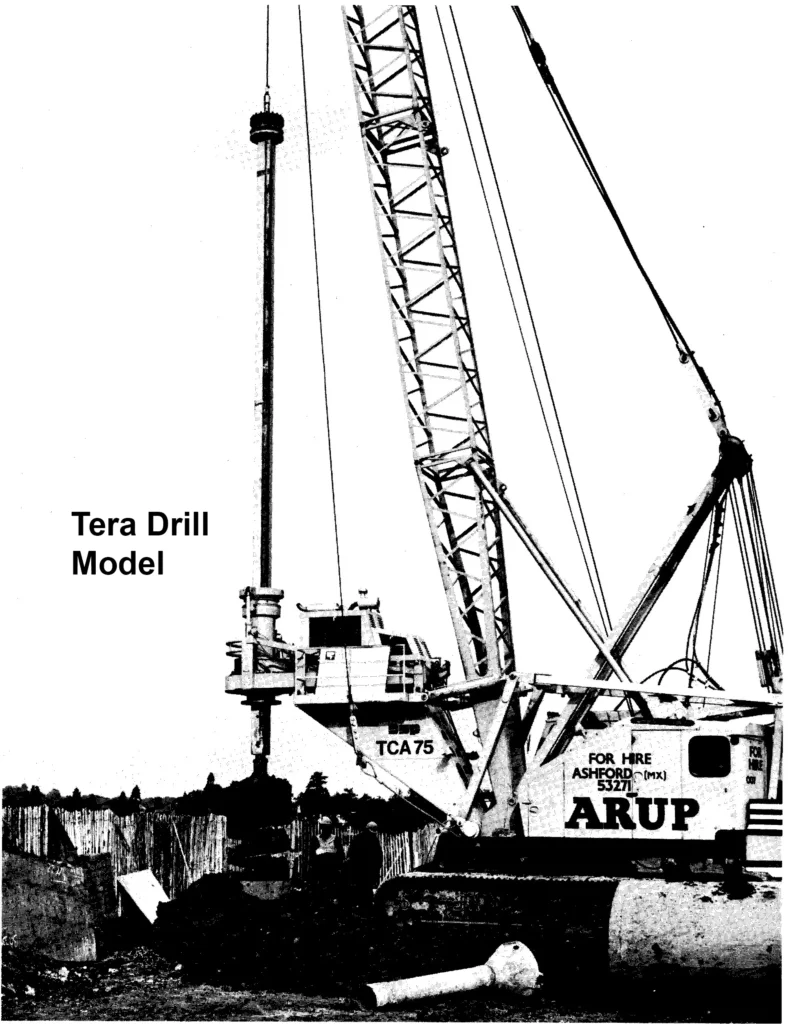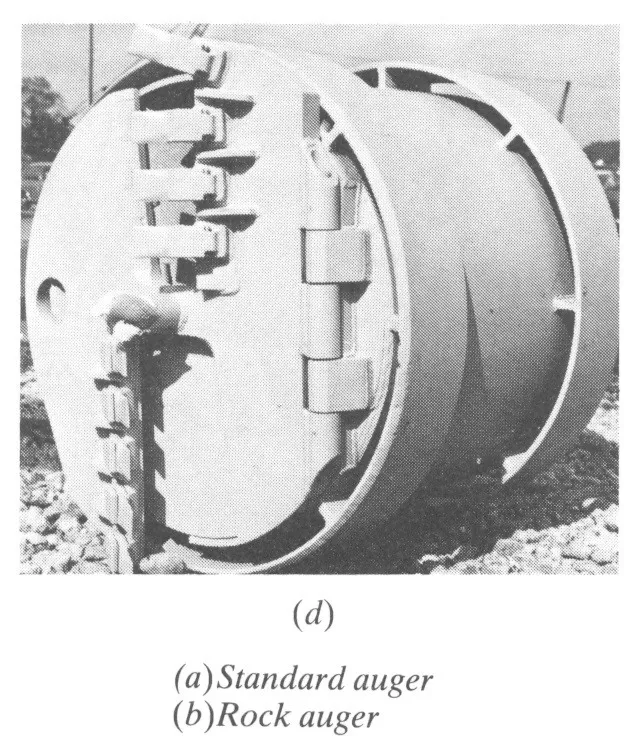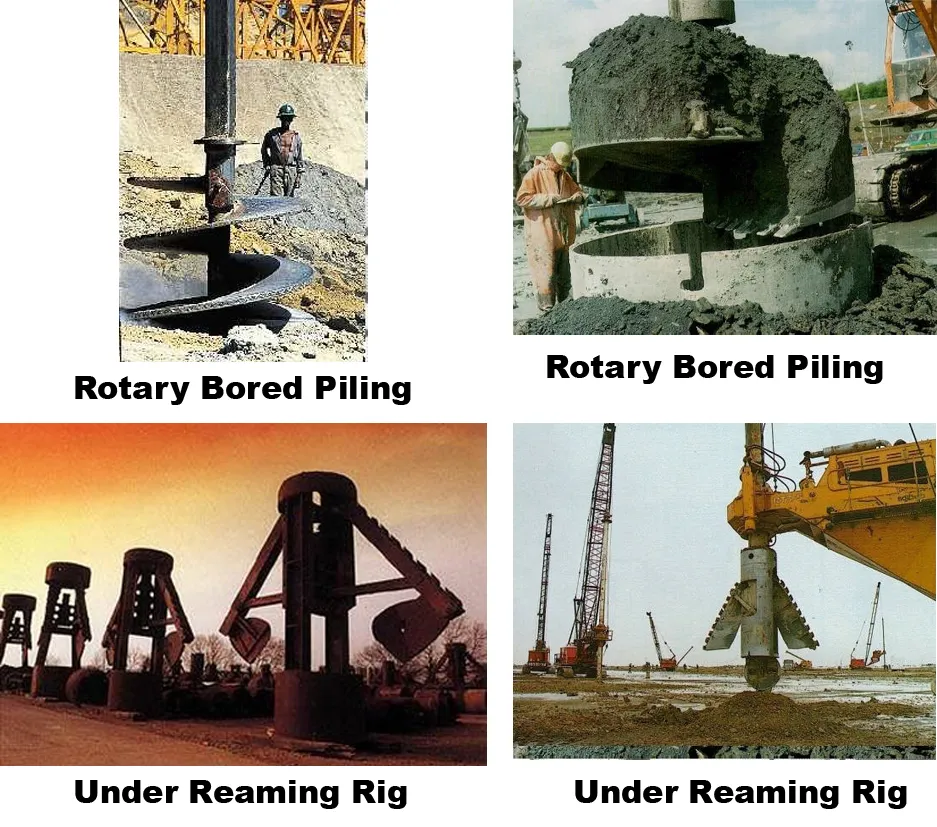If you want to know about the introduction of pile foundation or types of concrete and its uses or concrete mix design, please click the link.
Piling equipment and methods are used in construction to create deep foundations that can support heavy loads. Some common types of piling equipment include drilling rigs, pile drivers, and hydraulic hammers. The choice of method and equipment used depends on factors such as the type of soil, depth required, and environmental considerations.
- There are several machines and equipment which are employed for pile driving during construction.
- Pile foundations are one of the methods used to ensure that structures have a sturdy foundation. This method is most often chosen when the soil is unstable, or when there is significant moisture and water present in the area directly below where the structure is being built.
- This one foundational method can be carried out in a variety of different ways to suit various environments and needs.
1) Piling equipment and methods
- Equipments for Installing precast driven piles
- Equipments for installing driven and cast in situ piles
- Equipments for installing bored and cast in situ piles
i) Equipment for installing precast driven piles
- Pilling frames: – has the function of guiding the piles at its correct alignment from the stage of first pitching in position to its final penetrations. It also carried the hammer and maintaining it in position co-axially with the pile.
- Crane Supported (hanging) Leaders
- Trestle guides
- Piling hammers: – Selection depends on type and weight of the pile, characteristic of ground, volumed energy per blow, the striking rate and the fuel consumption. Single and double acting hammer are effective in all type of soils.


- Using pile drivers and pile hammer equipment, precast piles are hammered (or driven, hence the name) deep into the ground. Driven piles offer the benefit of being made from steel, concrete, or wood.
- The method is also beneficial because of the way it compacts the soil during the hammering process. Some soils, like silt, do not compact as well as others, and in cases like that, this benefit is lost. Another benefit of driven piles is that it allows the pile to distribute the load of the superstructure through both weight bearing and friction.
- One of the drawbacks of driven piles is that the hammering process can actually damage or compromise the strength of the pile. Pads are used to protect the hammer from hitting the pile directly as a measure to try to avoid damaging the piles. That said, the jarring blows can still cause damage, despite best efforts.
ii) Equipment for installing driven and cast in situ piles
- Same equipments which are used for Driven Piles are generally used for installing Driven and Cast in situ Piles

- A shell made of steel is driven into the ground, as a driven pile would be. Then, concrete is poured into the shell, making this method the best combination between the two previously mentioned piling methods.
- The benefits of this method draw from both the benefits of driven and bored piles: it allows for load distribution through friction, it does compact the surrounding soil, and the pile doesn’t lose integrity from being hammered down, because it’s only the shell that is actually hammered in.
iii) Equipment for installing Bored and cast in situ piles
- Power augers: – Power driven rotary auger drilled are suitable for installing bored piles in clay soils. The “highway” spiral plate auger is a lorry mounted machine which can drill holes up to 1370mm in diameter and to depths up to 12.5m.

- The range of “Terra Drill” machines manufactured for attachment to standard crawler cranes, is from 254mm diameter bore hole to a depth of 26m for the smallest size to 3.5m dia. meter bore holes to depth of up to 100m. This machine is manufactured by BSP interaction foundations limited

- Various types of equipment’s are available for use with rotary augers. The standard and rock augers have scop-bladed openings fitted with projecting teeth.
Coring Bucket

- The coring bucket is used to raise a solid core of rock

Bentonite Bucket
- Bentonite Bucket is designed to avoid scouring the mud cake, which forms, on the wall of the bore holes.

- Enlarged or under reamed bases can be cut by rotating a belling bucket within the previously drilled straight sided shaft.
- The bottom hinged bucket cuts to a hemispherical shape and because it is always cutting at the base it produced a clean and stable bottom.
- However the shape is not so stable as the conical form produced by the top hinged bucket have a tendency to jam when raising the bucket.
- But this type requires a separate cleaning operation of the base after under reaming.
- Belling buckets normally form enlargements up to 3.7m in dia but can excavate to a diameter of 6.1m with special arrangements.
- Belling bucket requires a shaft diameter of at least 0.76m.
- The essential condition for the successful operation of a rotary auger rig is a cohesive soil which will stand without support or a cohesionless soil supported by bentomite slurry.
- In these conditions fast drilling rates of up to 7M per hour are possible for smaller shaft size.

- Grabbing Rigs with Casing Oscillators
- Suitable for drilling through sands, gravels and loose rock formations, the pile bore holes may required continuous support by means of casing. It imparts a semi rotating motion to the casing through clamps.

- Reverse circulation drilling rigs
- Operates on the principle of the air lift pump. Compressed air is injected near the base of the centrally placed discharge pipe.
- The rising column of air and water lifts the soil which has been loosened by rotating cuffers and the casting tubes are also rotated to keep them freely moving in the soil as they sink down while the boring advances.
- It can drill at a fast rate in a wide range of ground conditions including weak rocks. Most effective in granular soil.
- Tripod rigs
- Small diameter piles with diameter up to 600mm installed in soils which requires continuous support by lining tubes are drilled by tripod rigs. Suitable if head room is restricted for deployment of other auger
- Drilling of piles with Bentomite slurry
- Lining tubes or casings to support the sides of pile bore holes are a requirement for most of the bored pile installation methods. Even in stiff cohesive soils it is desirable to use casings for support since these soils are frequently fissured.
- Casings can be avoided completely (except for a short length used at the top hole) by proving support to the pile bore hole in the form of a summer of bentomite clay.
- It is used most efficiently in conjunction with reverse circulation rigs.
- The slurry is pumped into the outer casing and the slurry soil mixture that is discharged from the air lift rise pipe is allowed to settle in lagoons to remove soil particles.
- Basic properties of drilling mud (bentonite)
- Clay of montmorillonite group. having exchangeable sodium cations. on dispersion break down into small plate like particles having a negative charge on the surfaces and positive charge on the edges. When dispersion is left to stand undisturbed, the particle becomes oriented building up a mechanical structure at its own. This mechanical structure held by electrical bonds behave like jelly material. When the jelly is agitated, the weak electrical bonds are broken, and the dispersion becomes FLUID.
- LL > 300 % < 450 % ( tested as per IS 2720 (PART V) –1965 )
- Sand content> 7 %
- Density of freshly prepared/bentonite suspension 1.034 to 1.10 kg./lit.
- Density after contamination upto 1.25 kg. / lit.
- The marsh viscosity ( tested by a marsh cone ) between 30 to 60 seconds
- The marsh viscosity may be upto 90 seconds in special cases but in these cases special type of pumping equipments will have to be used.
- The differential free swell > 540 %
- pH value from 9 TO 11.5
The type of equipment and method used depends on the soil conditions and the load-bearing requirements of the structure.